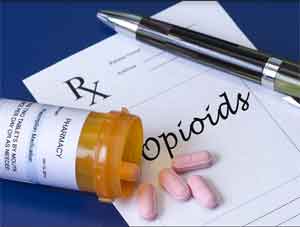- Home
- Editorial
- News
- Practice Guidelines
- Anesthesiology Guidelines
- Cancer Guidelines
- Cardiac Sciences Guidelines
- Critical Care Guidelines
- Dentistry Guidelines
- Dermatology Guidelines
- Diabetes and Endo Guidelines
- Diagnostics Guidelines
- ENT Guidelines
- Featured Practice Guidelines
- Gastroenterology Guidelines
- Geriatrics Guidelines
- Medicine Guidelines
- Nephrology Guidelines
- Neurosciences Guidelines
- Obs and Gynae Guidelines
- Ophthalmology Guidelines
- Orthopaedics Guidelines
- Paediatrics Guidelines
- Psychiatry Guidelines
- Pulmonology Guidelines
- Radiology Guidelines
- Surgery Guidelines
- Urology Guidelines
Opioid overdose deaths on the rise among children, finds study

Opioid overdose deaths on the rise in children, finds study.
Opioid epidemic in developed countries is harming both adults and children, and is straining the respective health care systems. Researchers conducted research to describe the outcomes and trends in resource use among children with acute opioid ingestions using patient-level case report data.
The researchers have found that the proportion of high-strength painkiller poisonings among children resulting in emergency hospital admissions has increased. The research has been published in the peer-reviewed journal Clinical Toxicology.
A study involving more than 200,000 US paediatric cases of pain-relief misuse, abuse or self-harm highlights how the opioid crisis is affecting young people. The results show that although the number of incidents reported overall has dropped since 2005, the threat to life is rising.
The proportion of paediatric intensive care unit (PICU) admissions rose by more than a third during the study period from 5,203 (6.6%), out of 80,141 reports of poisonings between 2005 and 2009, to 4,586 (9.6%) out of 48,435 between 2015 to 2018.
This trend of children ending up in intensive care is being fuelled by suspected suicide cases among under-19s who have overdosed on legal or prescription opioid drugs.
Methadone, prescription pain-reliever fentanyl and heroin are most associated with the need for intensive care doctors to give medical treatment, according to the findings.
The researchers are calling for a strategy that combines laws to restrict access to opioids with improved mental health support for children and adolescents. Doctors who treat children and young people should continue lobbying for policy changes, they add.
"This study suggests the opioid epidemic continues to have a serious impact on pediatric patients, and the healthcare resources required to care for them," says Dr Megan Land from Emory University School of Medicine, in Georgia, USA.
"Paediatricians caring for children with opioid ingestions must continue to strive for effective policy changes to mitigate this crisis."
Drug overdose deaths in the US have tripled in the past two decades. Those derived from the opium poppy plant (opioids) can be highly potent and account for two thirds of fatal drug poisonings.
The focus has largely been on adults so this study set out to investigate the impact on children, specifically trends in admissions to PICU.
The researchers consulted the National Poison Data System database for accidental or deliberate incidents of opioid exposure involving babies and children up to age 19. They found 207,543 cases were reported to 55 US poison control centres from 2005 to 2018.
Factors analysed included opioid type, cause of drug poisoning and the rate of cases admitted to psychiatric units. The study also calculated the proportion of patients who ended up in PICUs and the percentage of these requiring medical treatment.
The research suggests that the majority of child drug poisonings did not require an intensive care admission, and either resulted in minor effects such as drowsiness -- or none at all.
But the proportion needing specialist treatment did increase over the study period.
The picture was similar with psychiatric unit admissions -- the percentage of these more than doubled from 2,806 (3.57%), out of 80,141 between 2005 to 2009, to 3,909 (8.18%) out of 48,435 between 2015 to 2018. This was also the case for the proportion of intensive care admissions needing cardiopulmonary resuscitation (CPR) which went from 68 (1.31%) out of 5,203 to 146 (3.18%) out of 4,586 over the same time period.
For further reference log on to: http://dx.doi.org/10.1080/
Next Story
NO DATA FOUND

Disclaimer: This site is primarily intended for healthcare professionals. Any content/information on this website does not replace the advice of medical and/or health professionals and should not be construed as medical/diagnostic advice/endorsement or prescription. Use of this site is subject to our terms of use, privacy policy, advertisement policy. © 2020 Minerva Medical Treatment Pvt Ltd